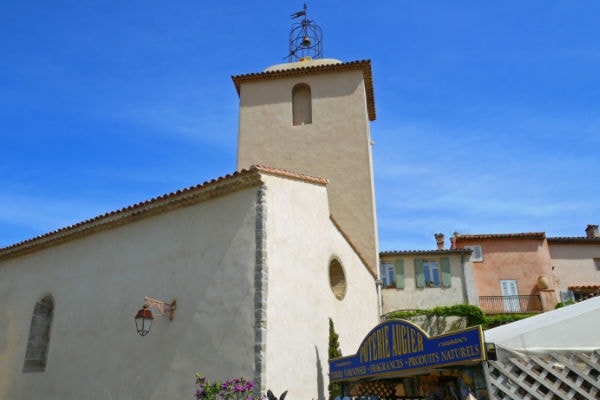The Church of Notre-Dame

The church of Ramatuelle is backed by the ancient wall that surrounded the village.
At the end of the sixteenth century, the parish church of Ramatuelle was destroyed as a result of the wars of religion. The consuls of the community then decided to rebuild it without asking permission from the bishop of the diocese or the prior. This new church was built around year 1582 was leaning against the wall that once surrounded the village to make the economics of building a wall. But in the decades that followed, Ramatuellois were forced to address numerous complaints to the bishop of Fréjus, because the prior refused to pay its share of side work. The roof is not completed, in bad weather it was raining in the church and this prevented the celebration of the “divine worship.” It is only in the early years of the seventeenth century that the church was completed with the drilling of the front door dated 1620. This entry is decorated with a rich portal serpentinite (more commonly known as serpentine), green porphyry which was extracted blocks in a career area of Carrade Cavalaire. Several indications suggest that the church was originally disposed in reverse. The altar had to be at the place of the current door (you can still see on the sides, small niches drainage service of the altar). The current vestry did not exist and its place was occupied by an open arch of the church and dominated by a large stone shaft still visible above the sacristy forum.
“The bull’s eye” which opens on the street bell then illuminated the interior of the church. The tower is the remains of one of the four watchtowers attested in the fourteenth century and were part of the fortifications. The guard room was kept and part of the walkway is still running on the roof of the church. These towers were essential to the population because they allowed to see the many dangers from the sea or the plain. Pirates, Barbary, soldiers and invaders of all kinds and that we tried to guard the left side of the church part corresponds to the wall of the old ramparts and four arcs. The second arc features a screened window that has three figurines: Saint Joseph and the Virgin Mary (sixteenth century). Classified as historical monuments and baby Jesus offered by actor Jean-Claude Brialy (1933-2007) who resided Ramatuelle. In the third arc, you can see the reliquary bust of St. Andrew, who was patron of the parish. According to tradition, St. Andrew was crucified at Patras (Greece, Peloponnese) in the year 60. He was martyred on a cross with equal arms called since St. Andrew’s cross. The reliquary bust of Saint Tropez and Sainte Maxime flank that of St. Andrew.
The choir contains a magnificent altarpiece of the seventeenth century listed with a representation of St. Andrew. The painted decoration of the vault (XIX c.) Has been recently restored. Work has revealed the existence of painted decoration of the seventeenth century. on the walls that support the roof of the choir. The right wall proposes a refund. A right of the entrance a plaque commemorates the crew of four submarines: “SM 2326”, “Sybille”, “Minerva”, “Eurydice” Missing off Cape Camarat from 1946 to 1970.